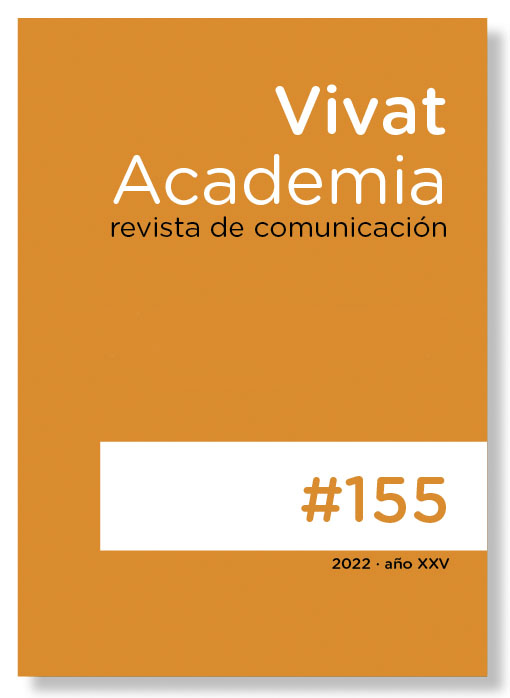The construction of a hemerographic literature review. An example from the concepts fake news, post-truth and misinformation in the web of science (WoS) environment
Main Article Content
Abstract
This article exemplifies a literature review of the concepts of fake news, post-truth, and disinformation, in the Web of Science database. The idea of creating a state of the art, despite being a routine activity in research processes, implies accounting for the unique differences when addressing emerging issues (such as the concepts discussed here) and, particularly, in the last 15 years, from hemerographic tools, in turn, based on hemerometric tools. Through a hemerographic tracking with the resources provided by Web of Science, a systematization is carried out to offer a sample of the possibilities of that base to elaborate a literature review. It was found that this tool, -although with restricted access- is very useful for the elaboration of the first thematic maps in the search for emerging topics and the identification of research core by disciplinary areas, authors, and conceptual differences.
Downloads
Article Details

This work is licensed under a Creative Commons Attribution-NonCommercial-ShareAlike 4.0 International License.
References
Bakir, V., & McStay, A. (2018). Fake news and the economy of emotions: problems, causes, solutions. Digital Journalism, 6(2), 154-175. https://doi.org/10.1080/21670811.2017.1345645
Bennett, W. L., & Livingston, S. (2018). The disinformation order: Disruptive communication and the decline of democratic institutions. European Journal of Communication, 33(2), 122–139. https://doi.org/10.1177/0267323118760317
Booth, W., Colomb, G., Williams, J., Bizup, J. y Fitzgerald, W. (2016). The craft of research. University of Chicago Press.
Brunce, A. (2019). After the ‘APIcalypse’: social media platforms and their fight against critical scholarly research. Information, Communication & Society, 22(11), 1544-1566. https://doi.org/10.1080/1369118X.2019.1637447
Carlson, M. (2020). Fake news as an informational moral panic: the symbolic deviancy of social media during the 2016 US presidential election. Information Communication and Society, 23(3), 374-388. https://doi.org/10.1080/1369118X.2018.1505934
Casero-Ripollés, A. (2020). Impact of Covid-19 on the media system. Communicative and democratic consecuences of news consumption during the outbreak. Profesional de la Información, 2(29), 1 - 11. https://doi.org/10.3145/epi.2020
Flick, U. (2015). El diseño de la investigación cualitativa. Morata.
Guo, L., & Vargo, C. (2020). Fake News and emerging online media ecosystem: an integrated intermedia agenda-setting analysis of the 2016 u.s. presidential election. Communication Research, 47(2), 178–200. https://doi.org/10.1177/0093650218777177
Hameleers, M., & Van Der Meer, T. G. L. A. (2020). Misinformation and polarization in a high-choice media environment: how effective are political fact-checkers?. Communication Research, 47(2), 227–250. https://doi.org/10.1177/0093650218819671
Merriam, S. y Tisdell, E. (2015). Qualitative research: A guide to design and implementation. Jossey Bass.
Quandt, T. (2018). Dark participation. Media and Communication, 6(4), 36-48. https://doi.org/10.17645/mac.v6i4.1519
Repiso, R., Aguaded, I. y Moreno, A. (2020). Factores que influyen en la frecuencia de citación de un artículo. Iberoamerican Journal of Science Measurement and Communication, 1(1), 1-7. https://doi.org/10.47909/ijsmc.08
Rogel-Salazar, R. (2017). La importancia de la edición científica y los fugaces bordes de sus límites. Espacio ID Innovación + Desarrollo, 6(14), 8-20. https://doi.org/10.31644/IMASD.14.2017.a01
Rogers, R. (2019). Doing digital methods. Sage.
Román-San-Miguel, A., Sánchez-Gey-Valenzuela, N. y Elías-Zambrano, R. (2020). Las fake news durante el Estado de Alarma por COVID-19. Análisis desde el punto de vista político en la prensa española. Revista Latina De Comunicación Social, (78), 359-391. https://doi.org/10.4185/RLCS-2020-1481
Schulz, A., Wirth, W., & Müller, P. (2020). We are the people and you are fake news: a social identity approach to populist citizens’ false consensus and hostile media perceptions. Communication Research, 47(2), 201–226. https://doi.org/10.1177/0093650218794854
Srnicek, N. (2019). Platform capitalism. Polity Press.
Tandoc, E. C. Jr., Lim, Z. W., & Ling, R. (2018). Defining fake news: a typology of scholarly definitions. Digital Journalism, 6(2), 137-153. https://doi.org/10.1080/21670811.2017.1360143
Thomson, P. y Walker, M. (Eds.). (2010). The Routledge doctoral student’s companion: Getting to grips with research in education and the social sciences. Routledge.
Trimmer, J. (2012). A guide to MLA documentation (8.a ed.). Cengage.
Van Duyn, E., & Collier, J. (2019). Priming and fake news: the effects of elite discourse on evaluations of news media. Mass Communication and Society, 22(1), 29-48. https://doi.org/10.1080/15205436.2018.1511807
Vargo, C. J., Guo, L., & Amazeen, M. A. (2018). The agenda-setting power of fake news: A big data analysis of the online media landscape from 2014 to 2016. New Media & Society, 20(5), 2028–2049. https://doi.org/10.1177/1461444817712086
Waisbord, S. (2018). Truth is what happens to news. Journalism Studies, 19(13) 1866-1878. https://doi.org/10.1080/1461670X.2018.1492881
Waisbord, S. (2021). Los peligros de la posverdad [entrada de blog]. Cátedra unesco amidi udg. http://www.amidi.org/peligros-posverdad/
Wasserman, H. (2020). Fake news from Africa: Panics, politics and paradigms. Journalism, 21(1), 3–16. https://doi.org/10.1177/1464884917746861





